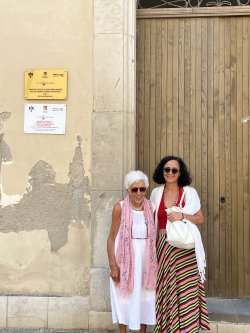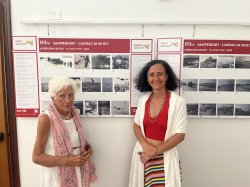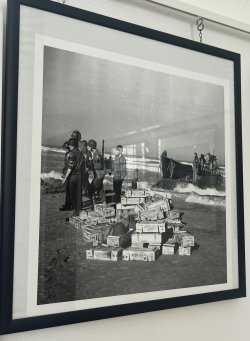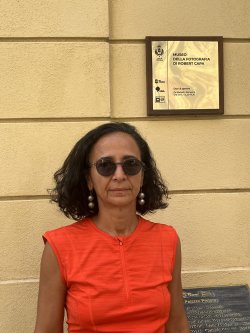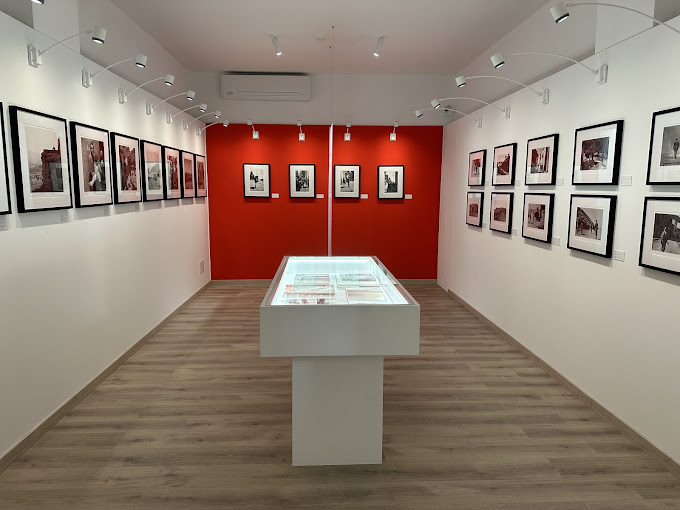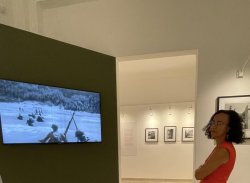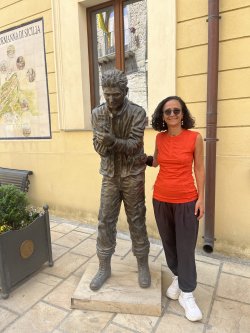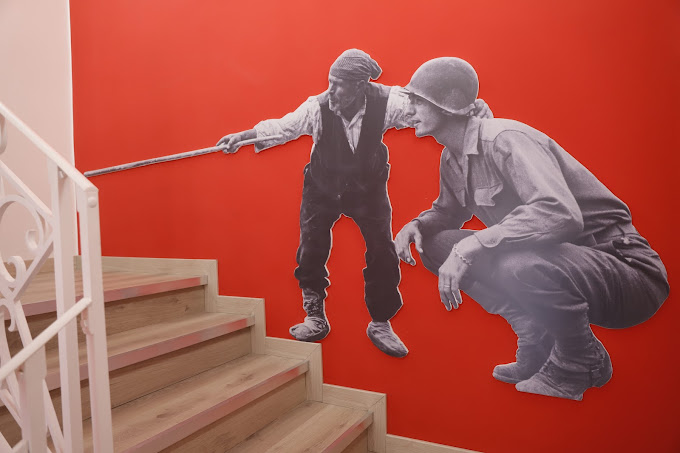Dr. Fiore’s Research Work in Sicily (Summer 2024)
Posted in: Homepage News and Events, Inserra, World Languages and Cultures
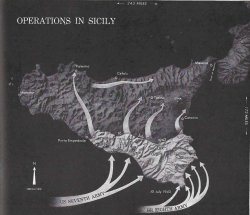
Dr. Teresa Fiore (Inserra Endowed Chair in Italian and Italian American Studies) has focused on one of her current research projects this summer – Food, Hunger, Migration and the American Myth in Sicily at the Time of the WWII Allied Landing – taking advantage of new resources available in Sicily.
This project offers a variegated reading of the 1943 Allied Landing on the Southern coast of Sicily as part of Operation Husky through the novel perspective of food practices by interweaving accounts of food security and insecurity sourced from direct witnesses, historical scholarship, and a novella by Leonardo Sciascia addressing foodways in Sicily before, during and after WWII (read more).
This past July, Dr. Fiore (on the right) was able to visit a new documentation center about the landing in Licata that hosts a permanent collection of display boards gathering photos, letters, official reports, etc. about the Fascists era, the war period, Operation Husky, and the U.S.-controlled government set up after the liberation.
Organized in a chronological manner, the boards present scenes of military, private, cultural, and school life in the town of Licata between the late 1930s and the mid-1940s. Planned and implemented by the association Memento in collaboration with the Archeological Park of Agrigento, the center is located in a prime position in the heart of Licata, right across from an intimate museum of war memorabilia.
“I am grateful to Prof. Zangara (pictured in this photo) for introducing me to this center, sharing the story of its genesis, and illustrating its potential. Licata continues to be a key location to narrate the story of Operation Husky. Her efforts along those of the colleagues and partners she has worked with are admirable. Now the project needs further support and targeted planning to be more incisive,” Dr. Fiore remarked
Meanwhile, select documents focusing on food at this center, including photos by Philip Stern (see left), have proven to be of interest for her larger project. For more information, see Centro di Documentazione sullo sbarco di Licata.
In August, Dr. Fiore visited the Robert Capa’s Photography Museum in Troina. A jewel in terms of design and curatorial work, the museum hosts a precious collection of the amazing photos that the renowned Magnum photographer – arguably the greatest war photographer and innovator of photojournalism – took in Sicily in the course of Operation Husky.
The museum focuses on the Troina series, but also embraces pictures about different parts of Sicily, highlighting some of the most memorable shots taken by Capa (see bottom of this page) through the operation, while also including previously unpublished photos (read more).
Enhanced by incisive historical explanations mixed with quotes from Capa’s writings, and a video with original military footage, the photos constitute an important source for Dr. Fiore’s project.
“I was excited to learn that the museum in Troina worked in partnership with the NJ-based branch of the International Center of Photography, and I look forward to going through their collection to identify photos about moments of food exchange and consumption that Capa may have captured,” she commented.
This approach will continue to be at the core of Dr. Fiore’s research endeavors which aim at offering a fresh take both on military strategy and the tastes and desires of participants in the larger theater of war. Operation Husky, a massive campaign that commenced the liberation of Europe from Nazi-Fascism as the largest amphibious attack in military history up to that point, has been overshadowed by the more dramatic events of D-Day. In the collective imaginary, it is synonymous with the distribution of sweets to a struggling population by mythicized American soldiers. This project reintroduces the Landing in Sicily to the U.S. public challenging long-standing perspectives on foodways.

